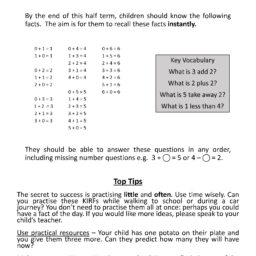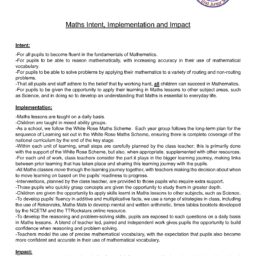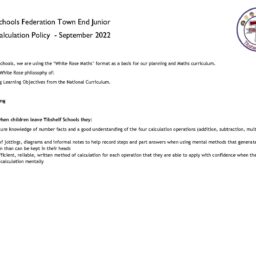Maths Overview
As part of the Tibshelf Schools Federation, we work closely with our colleagues at Tibshelf Infant School to ensure that the skills developed by the pupils in Key Stage 1 are built upon in Key Stage 2. At Town End, the intent of our Maths Curriculum is, first and foremost, to help pupils to develop a love of Maths and a ‘can-do’ attitude towards the subject. To do this, we will move pupils through the curriculum at broadly the same pace, making decisions about when to move learning on based on the pupils’ readiness to progress. We will support all pupils to meet their potential by providing regular interventions for those needing extra support, whilst also giving pupils who quickly grasp concepts the opportunity to study them in greater depth. We intend to share the learning journey with the pupils, giving children a clear picture of their progress within the subject. We will help pupils develop their fluency when using mental and written methods, also supporting pupils in their knowledge of additive and multiplicative number facts. We will also give all pupils regular opportunities to develop their mathematical reasoning and competency in solving increasingly sophisticated problems. Through high level modelling and regular peer discussion opportunities, we intend to help pupils develop the precision with which they use mathematical vocabulary. We also want children to develop rich connections between mathematical ideas and will give pupils the opportunity to apply learnt skills across other subjects, such as Science.
Aims
The national curriculum for mathematics aims to ensure that all pupils:
- become fluent in the fundamentals of mathematics, including through varied and frequent
practice with increasingly complex problems over time, so that pupils develop conceptual
understanding and the ability to recall and apply knowledge rapidly and accurately. - reason mathematically by following a line of enquiry, conjecturing relationships and
generalisations, and developing an argument, justification or proof using mathematical
language. - can solve problems by applying their mathematics to a variety of routine and non-routine
problems with increasing sophistication, including breaking down problems into a series of
simpler steps and persevering in seeking solutions.
 |
2023_Information_for_parents_Multiplication_tables_check_Nov_22_PDFA.pdf
Multiplication Check 2023 - Information for parents. application/pdfMultiplication Check 2023 - Information for parents. Open Download Copy Link 623.23 KB 2023-06-13 13 June 2023 2023-06-13 13 June 2023 |
 |
KIRF-all-groups.pdf
Key Instant Recall Facts application/pdfKey Instant Recall Facts Key Instant Recall Facts Open Download Copy Link 1.22 MB 2023-06-13 13 June 2023 2023-06-13 13 June 2023 |
 |
Maths-3-Is.pdf
Intent, Implementation and Impact application/pdfIntent, Implementation and Impact Intent, Implementation and Impact Open Download Copy Link 116.37 KB 2023-06-13 13 June 2023 2023-06-13 13 June 2023 |
 |
Tibshelf-Schools-Calculation-Policy.pdf
Calculation Policy 2022 application/pdfCalculation Policy 2022 Calculation Policy 2022 Open Download Copy Link 5.04 MB 2023-06-13 13 June 2023 2023-06-13 13 June 2023 |
4
Long Term Plan
National Curriculum and Ready to Progress Criteria
- NC and Ready to Progress Criteria Calculation
- NC and Ready to Progress Criteria Fractions
- NC and Ready to Progress Criteria Geometry
- NC and Ready to Progress Criteria Measures
- NC and Ready to Progress Criteria Number and Place Value
- NC and Ready to Progress Criteria Statistics